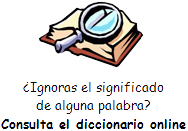Afraid of Public Speaking? You Are
Not Alone!
Students in American schools learn from an early age to give
presentations as part of their regular classroom activities. Children as
young as five years old often give brief talks about objects they bring
in to school - called “show and tell,” this training is a basis for
later public speaking.
Even so, many native English-speaking adults are afraid to speak or give
presentations in front of a large group. There is a large industry of
consultants who train professionals in public speaking.
Comedian Jerry Seinfeld said the most common fear people have is public
speaking. The second most common fear is death. He made a joke about
this. He said,
"I saw a thing, actually a study that said: speaking in front of a crowd
is considered the number one fear of the average person. I found that
amazing.
Number two, was death. Death is number two? This means, to the average
person, if you have to be at a funeral, you would rather be in the
casket than doing the eulogy."
Speaking English in public meetings is necessary for many students and
employees. The best way to improve is to practice public speaking in a
friendly environment. Learners need to receive feedback about what they
are doing well and about their mistakes. One group that gives members
the chance to practice is Toastmasters.
Toastmasters is an international organization that holds weekly meetings.
At the meetings, members each give a speech and give others advice about
their speeches and speaking style.
Charles LeBeau is a public speaking professor
and consultant. He began his career in Japan in 1982. Currently, he
teaches at two universities and at the Toshiba International Training
Center. He has also written books on the subject.
English language learners around the world use his book Speaking of
Speech.
Mr. LeBeau says that students in other cultures may not have the chance
to practice public speaking as young children. When they reach the
college level, or enter their career, they need to present well in
English. Many careers require public speaking skills.
“In Japan now, most students need to do presentations in many of their
classes. The other area is professionally. Whatever profession those
students are in, or are going to be in, presentations are going to be an
important part of it. So for example, if they’re going to be in sales,
presentation is an important part of sales. If they are going to be a
teacher, it’s an important part of being a teacher. If they are going to
be in the tourism industry, it’s an important part of that. Practically,
in almost all kinds of work there’s some opportunity to do a
presentation.”
Speaking of Speech tells about a method of teaching public speaking for
non-native speakers. Mr. LeBeau says a simple approach helps English
learners.
So, the professor divides public speaking into three parts: the physical
message, the visual message, and the story message.
“The central thing to remember about public speaking or presentation is
that it’s a very complex, sophisticated communicative activity. For
non-native speakers it’s a really scary activity. So to make that more
simplistic and easy for them, and to keep it from being so overwhelming,
because there’s so many things going on, the approach that I’ve taken is
to simplify and break it down. First if we look at presentation, what’s
going on, there are basically three messages that the presenter is
giving the audience, all simultaneously. There’s what I call the
physical message. It’s basically body language. It’s the way that my
body, as a speaker, is talking to the audience. Then there’s also the
visual message. The visual message(s) are the slides that we now make
and show the audience. The third message is the story message. The story
message is the content of our presentation. So another way we can think
of the story message is that it’s the verbal message, it’s what we say
to the audience. The story message also includes how we organize our
ideas to present to the audience.”
The graphic [click to enlarge] shows examples of these three messages.
Mr. LeBeau finds that company employees are under pressure to perform
well when giving professional presentations. He says it can take years
to improve general English speaking ability.
He says the simple approach to breaking down the parts of public
speaking has proved itself. He says learners improve quickly and do a
good presentation after a few days of study.
“They don’t have the time to work and improve their English, they don’t
have three or four years to work on their English and become better
English speakers. What they need to do is work on their presentation
skills, so that they can give a good presentation next week, regardless
of the level of their English. So I think this is why focusing on
presentation skills is really, really important. Of course, over the
long run they have to improve their English. But if we can help them
improve their presentation skills, they can do a good presentation
regardless of their English level.”
Modern technology is an important tool in teaching and learning public
speaking. Many students now have a phone or device that can take videos.
Using these videos, students can watch themselves and see how they
appear to their audience. They can also watch models of good speeches on
the Internet and learn from watching videos of public speaking experts.
In the next ‘Speaking Tips’ we will explore Charles LeBeau’s
recommendations for improving the Physical Message. He thinks this is
the public speaking skill that is easiest for English learners to
improve quickly. |
![]() ).
Utiliza el botón derecho del ratón y "guardar enlace" para descargar el
fichero a tu PC, tablet, Smartphone, etc.
).
Utiliza el botón derecho del ratón y "guardar enlace" para descargar el
fichero a tu PC, tablet, Smartphone, etc.![]() Escucha el audio
Escucha el audio



